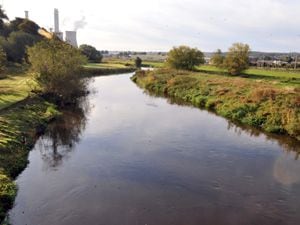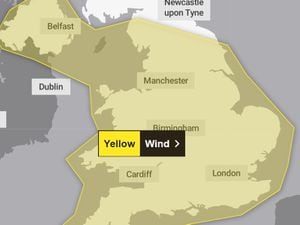Nine in 10 of region's rivers polluted with 'toxic cocktails'
More than nine in 10 rivers and lakes across the West Midlands were found to be contaminated with 'toxic chemical cocktails', according to a new report.

The study, jointly carried out by the Wildlife and Countryside Link and The River Trust examined the presence of five key pollutants in rivers, lakes and groundwater across England.
It found that all but five of the 69 rivers and lakes in the region contained at least one of the contaminants – accounting for 93 per cent of the affected sites.
Of these, seven rivers were found to contain three or more of the toxic cocktails.
The study looked at five different hazardous mixtures which include at least one of six chemicals: PFOS, PFOA, PFBS and PFHxS, which are known as 'forever chemicals' because they do not break down, the pesticide 2,4-D and the painkiller ibuprofen. These chemical mixes have all been found to be harmful to wildlife.
Using the Environment Agency's own data relating to lakes, rivers and groundwater, it found the problem was worst in the south of England.
The West Midlands was found to have a slightly lower overall percentage of sites affected, with just 48 per cent of groundwater sites suffering from contamination. But it also found a very high proportion of its rivers and lakes were polluted.
The biggest hotspot was the River Avon in Evesham, where 100 different chemicals were found in the water, including all five of the identified pollutants. It was followed closely by the River Trent at Yoxall Bridge, where 94 chemicals were found, including all five cocktails. The River Trent at Rugeley contained 57 chemicals, including all five of the compounds identified.
The rivers Tame, Teme, Stour, Lugg and Mill Brook were all found to contain the five compounds at certain points. The River Stour at Crimscote, Warwickshire, was found to contain 62 chemicals, the Mill Brook at Hillworth in Worcestershire 60 chemicals, and the River Tame near Coleshill 58 chemicals. The Teme at Powick, Worcestershire, and the Lugg at Mordiford Bridge, Herefordshire, showed 52 and 51 chemicals respectively.
The East of England and Yorkshire and Humber regions were the least affected regions, but almost one in six of the sites tested for at least one of the substances.
Overall, researchers found toxic combinations proven to be harmful to wildlife in 814 river and lake sites – 81 per cent of the total where data is available.
They found the same cocktails in 805 groundwater sites, representing 74 per cent of the total.
The cocktails, which enter the environment through industrial and agricultural pollution or sewage, combine to create increased poisonous effects on species such as amphibians, fish, insects, nitrogen-fixing bacteria and algae.
Rob Collins, director of policy and science at the Rivers Trust, said: “We need to stop pumping poison into our rivers.
"Hazardous chemicals are flowing into our waters, derived from every aspect of our lives. On the small-scale from the toiletries, food packaging, clothing and other goods we use individually, to large-scale industrial, medical and food production, we are creating an ever-growing chemical cocktail in our rivers.
"The fact that these known toxic chemical combinations are found so widely across the country is deeply worrying. And that’s just the tip of the iceberg.
"Unless we act now we’ll see increasingly contaminated water, less wildlife in our rivers and ocean, and this raises implications for human health as well.”
Richard Benwell, chief executive of the Wildlife and Countryside Link, said that while the Government regulated and monitored the concentration of individual pollutants, it had not given adequate thought to the impact of when different chemicals were mixed together.
"A harmful chemical cocktail is being stirred up in UK rivers, putting wildlife and public health at risk," he said.
"Our research shows that toxic combinations of pesticides, pharmaceuticals and forever chemicals are polluting rivers up and down the country."
Mr Benwell said the Government's new chemicals strategy, due to be published this year, must make sure harmful substances are regulated not just for individual risks, but for their effects in combination.





